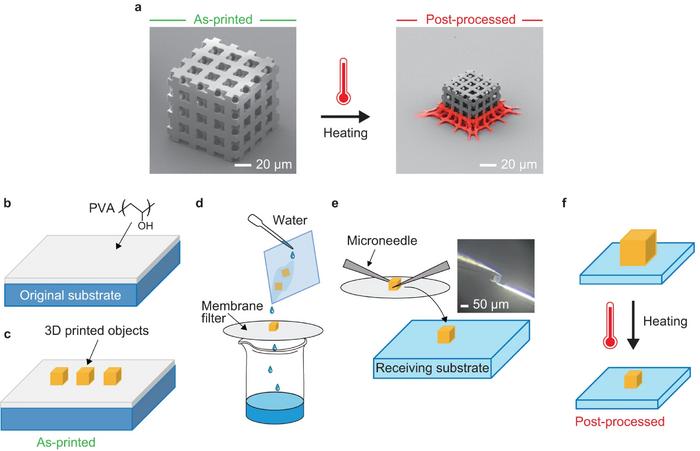Researchers have developed a new method to ensure uniform shrinkage in 3D printed micro and nanostructures, using two-photon polymerization lithography (TPL). The team, led by Professor Joel Yang from the Singapore University of Technology and Design (SUTD), collaborated with the Industrial Technology Center of Wakayama Prefecture in Japan. Their process employs a layer of poly(vinyl alcohol) (PVA) on the printing substrate, enabling the transfer of 3D printed parts onto a separate substrate for controlled reduction. This technique addresses the challenge of non-uniform shrinkage and expands the potential applications of TPL.

The research, published in Nature Communications, showcases the successful application of this method on complex geometries. The loose attachment of the structures to the new substrate allows for uniform shrinkage during heating, avoiding distortions. This approach not only overcomes limitations in resolution and material rigidity but also allows for the integration of microscopic 3D printed parts with other devices or substrates unsuitable for TPL.
This technique opens up new possibilities, such as creating materials that change colors in response to lighting conditions, useful in anti-counterfeiting. It also promises advancements in manufacturing intricate heat sinks for high-performance electronics and enables the creation of mechanical parts, optical elements, and acoustic devices with high precision.
The team plans to extend the application of their technique to materials with higher refractive indices for improved photonic crystals, enhancing technologies in lasers, imaging systems, and optical sensors. They are also refining the control of spacing in printed structures for full-color, 3D models that manipulate light precisely.
You can read the research paper titled “Pick and place process for uniform shrinking of 3D printed micro- and nano-architected materials” over at this link.
Come and let us know your thoughts on our Facebook, X, and LinkedIn pages, and don’t forget to sign up for our weekly additive manufacturing newsletter to get all the latest stories delivered right to your inbox.









